Building a Collection #64: Grieg's Piano Concerto
With recommended recordings
Building a Collection #64
Piano Concerto in A minor, Op. 16
By Edvard Grieg
________________
“Artists like Bach and Beethoven erected churches and temples on the heights. I only wanted to build dwellings for men in which they might feel happy and at home”.
- Edvard Grieg
Edvard Grieg
Edvard Hagerup Grieg (1843-1907) was a Norwegian classical composer of the Romantic era, and many of his works are part of the standard repertoire around the world. Grieg’s use of Norwegian folk tunes framed much of his work and gave his music a nationalistic dimension, much as Sibelius did for Finland and Smetana for Bohemia (Czech Republic).
While Grieg would eventually become strongly associated with Norway, his family roots are from Scotland (from the Gregor Clan), and it was his great-grandfather that brought the family to Norway around 1770, where they settled in Bergen. It may be argued Grieg is the most famous person ever from Bergen, where he is celebrated as a cultural hero.
Grieg’s mother was a music teacher, and his first piano teacher, and so music was encouraged in the family. He enrolled at the Leipzig Conservatory at the age of 15, concentrating on the piano. But Grieg disliked the structure and rigor of his studies there, and came away from the experience without discovering his own individuality. As a young man, Grieg also endured several life-threatening health issues which would impact him for the rest of his life.
In 1867 Grieg married his first cousin Nina Hagerup, and the next year their only child Alexandra was born. Sadly, Alexandra died of meningitis in 1869. Grieg’s first big breakthrough as a composer was his Piano Concerto in A minor, completed in 1868 when he was only 24. In 1870, Grieg traveled to Rome and met Franz Liszt. Liszt took great interest in Grieg’s music, and was delighted to review and critique Grieg’s Violin Sonata no. 1 and his Piano Concerto. Liszt made some suggestions here and there, and to Grieg’s astonishment Liszt immediately sat down and played the entire concerto.
Grieg would go on to compose the incidental music for Henrik Ibsen’s play Peer Gynt, and the general consensus is the music had a great deal to do with the play’s success and the music itself became one of Grieg’s most popular works either in complete form or arranged as a suite. Grieg would eventually meet Tchaikovsky, and they shared mutual appreciation for each other’s music. In 1899 Grieg became embroiled in the Dreyfus Affair in France (this was an antisemitic scandal plaguing French politics at the time) by canceling a series of concerts there and issuing a statement which expressed the hope the French might “...soon return to the spirit of 1789, when the French republic declared that it would defend basic human rights.” Grieg became the target of some French hate mail.
Other works by Grieg which have become well-known and are often performed include the Holberg Suite, Lyric Suite for Orchestra, Lyric Pieces, the Violin Sonatas, Two Elegaic Melodies, and Four Norwegian Dances. But there can be little doubt that Grieg’s Piano Concerto has left the most impact.
Piano Concerto
Grieg’s Piano Concerto was the only concerto he completed and yet it is one of the most popular concertos for piano ever composed. There is good evidence Grieg heard Robert Schumann’s Piano Concerto while he was a student at the Leipzig Conservatory, and it seems Grieg took inspiration from it. Even though Grieg claimed he had not yet found his individual voice, his concerto suggests otherwise.
In the concerto Grieg did not formally use the Norwegian folk music he would infuse into his later works, but there is the clear influence of his country’s folk music permeating the piece, as well as some typical German romantic era influence. Even though the concerto calls to mind Norway, Grieg actually wrote the piece while vacationing in Denmark. Given how young he was at the time, Grieg’s writing is strikingly self-assured and mature. The premiere in Copenhagen in 1869 was a smashing success, with the audience spontaneously bursting into applause. Although the original score was published in 1872, Grieg would continue to make small revisions until late in his life.
One of the trademarks of the concerto is the opening timpani roll followed by the loud and dramatic piano entry. The main theme appears on the woodwinds and is then echoed by the piano (reminiscent of Schumann). The secondary theme is in C major, which appears again later in A major. The conclusion of the first movement has a cadenza which includes a flourish similar to the beginning.
The second movement is one of the most sublime creations in the history of music (in my humble opinion). It contains a poignant main theme with much lyrical development. The muted opening is quite moving and it proceeds with a sort of yearning melody in which echoes of the first movement can be heard. Just beautiful.
The final movement presents an energetic theme resembling a folk dance, which eventually morphs into a second, more lyrical theme. The first theme returns followed by some charming dance variations on that theme. The movement ends with the second theme in a more drawn out form which has been transformed into a joyful and grand finale which ends in another timpani roll.
Edvard Grieg’s concerto has often been closely associated with Robert Schumann’s concerto, especially since Grieg used Schumann’s concerto as an inspiration. Furthermore, both concertos are in the same key and employ similar piano flourishes at the beginning. In terms of style and structure, the two concertos are considered to be more similar than any other pair of romantic concertos. You will often see the concertos paired together on recordings as well.
Recommended Recordings
The Grieg concerto has been recorded so many times (some say too many times) that to compare recordings is a foolish endeavor. So consider the recordings I’ve chosen below a good place to start, if you will. There is always more to discover, but I have outlined my favorite recordings below. I welcome your comments about other recordings I may have unintentionally omitted. As has been the case recently, I don’t have an “essential” recording for this concerto, as there are just too many good ones.
I must admit at the outset to a bias in recordings of this concerto. The opening piano flourish sets the tone for the entire performance in my view, and if played too slowly it can sometimes (though not always) be indicative of a slow or lumbering performance ahead. The rhythmic pulse must be maintained throughout together with the inherent lyricism, especially in the outer movements, or the piece can quickly devolve into an emotionally flat performance. I don’t advocate an aggressive or overly quick approach either, but in my view this concerto is not intended to be heavy and thick like you might hear in Brahms or Rachmaninoff. For me an ideal performance combines emotional expression, power when needed, a lightness of touch in the more lyrical passages, and alert rhythms combined with dynamics and tempos which serve the phrase at hand.
The Belgian pianist Arthur de Greef knew Grieg personally and performed the concerto several times with Grieg conducting. De Greef recorded the most successful early recording in 1927 with the Royal Albert Hall Orchestra under the direction of Landon Ronald, now available in surprisingly good sound on the APR label and on streaming services. While somewhat abridged, this account finds de Greef in incandescent form and he reveals many details and insights. Grieg believed de Greef was the finest proponent of his concerto, declaring that de Greef understood the meaning of his music and had the most instinctual feel for Grieg’s writing. It is not a perfect recording, and the sound quality is in the “historical” category meaning it has limitations. But it gives us a glimpse of what Grieg himself wanted a performance to be.
Polish-American Arthur Rubinstein was one of the Grieg concerto’s finest advocates, and he recorded it four times commercially among other live and pirated recordings. But in terms of interpretation I prefer his first recording with The Philadelphia Orchestra and Eugene Ormandy from 1942 on RCA/Sony. The sound may be a deal breaker for some, as there is persistent hiss on the tape and the sound lacks the depth and perspective of modern recordings. At times Rubinstein’s piano feels too distant and unclear. But I urge you to listen to the performance which shows Rubinstein at his most direct and unaffected, with plenty of power and virtuosity to spare. His later efforts, while certainly good (the Wallenstein versions specifically are worth exploring), are tame by comparison. Listen to how he makes the piano roar on this recording, and I would also say the relatively young Ormandy goes along with him very well. There are no heavy handed textures or schmaltzy phrases. Just great music making.
Many listeners believe the 1947 recording of the Grieg by Dinu Lipatti and the Philharmonia Orchestra under Alceo Galliera on EMI/Warner qualifies as an essential recording, and I must admit it richly deserves its classic status. Lipatti would tragically pass away only three years after this recording, at the age of 33, due to complications from Hodgkin’s disease. Recorded at Abbey Road in London, recent remastering has improved some of the sound, although it still has some brittleness, boxiness, as well as some background hiss. Nevermind about the sound. I love the performance by Lipatti because it is exciting and technically impressive. It has an energy paired with just the right amount of sentimentality and lyricism, and avoids any heaviness. Galliera is an effective, if unremarkable partner, and the Philharmonia sounds on top of their game. Lipatti has a magic touch in the lyrical sections, and particularly in the central movement. Listen to his entrance at 2’10” and again at 2’55” in the Adagio, it is a marvel. This is pianism of the highest level in my opinion, and I find it uniquely moving. Some claim EMI took advantage of Lipatti’s early death to make this a “classic” recording almost from the beginning. Perhaps, but what I know is that this is unquestionably one of the finest versions of this concerto ever recorded.
The 1958 recording of the Grieg concerto with a 23 year-old Philippe Entremont and The Philadelphia Orchestra with Eugene Ormandy on Sony Essential Classics finds a daring and swashbuckling Entremont together with an energized Ormandy. Thank you to Derek, one of my dedicated readers, for pointing out I had wrongly omitted this outstanding recording from my original recommendations. This is a no-holds barred type of performance, with the up-front sound standing up very well to the years. Entremont’s is not the most searching or subtle of interpretation, but in terms of excitement this can stand up to any performance. Listen to his attack from the very start, this is exactly how I like to hear the opening, and the finale is colorful and virtuosic with the Philadelphians playing in a more uninhibited way than we would hear later in the 60s and 70s. I will certainly return to this recording often.
American pianist Leon Fleisher recorded the Grieg concerto in his prime in 1960 with The Cleveland Orchestra and George Szell for Columbia/Sony, paired with the Schumann concerto. Fleisher is penetrating and dramatic in the outer movements, and is especially sublime in the Adagio. Szell leads a typically taut and direct reading, disciplined and involving. The slow movement is particularly moving and rapt. The sound is a bit edgy and lacks some depth, but is perfectly acceptable.
Hungarian-born French pianist György Cziffra was an exciting, if at times unpredictable, virtuoso and his Grieg is perhaps more “unbuttoned” than most, but in a good way. Cziffra was an “outside the box” interpreter, but also an artist of great taste. His recording of the Grieg concerto on EMI/Warner was made in 1969, and Cziffra is accompanied by the Budapest Symphony Orchestra led capably by Cziffra’s son György Cziffra Jr. Recorded at the Salle Wagram in Paris, the sound is very good. The central Adagio is possibly the slowest on record, and Cziffra wrings every ounce of pathos out of it, but it never feels too slow. Cziffra made his reputation by whipping through notes in a mad dash in a virtuosic storm, so it is notable that this performance is not in that mold and indeed Cziffra reveals the lyricism and serenity more than most. His detail and articulation are beyond reproach. This is one to consider. There is also a live recording of Cziffra with the ORTF orchestra in Paris from 1959 on the ICA label, though I have not heard it.
American pianist Stephen Kovacevich’s recording of the Grieg (and Schumann) concertos from 1971 on Philips/Decca is something of a classic as well. Recorded with the BBC Symphony Orchestra under Colin Davis, this will be a top choice for many listeners due to Kovacevich’s intelligent phrasing and expressive central movement. The faster passages are dispatched with impressive detail and articulation, while Kovacevich does not miss the small subtleties along the way. There is fire and power as well, with the BBC sounding terrific under Davis. The sound is as good as you will hear from the late analog period, well balanced and offering a realistic perspective.
The 1973 recording with Radu Lupu joined by the London Symphony Orchestra and André Previn on Decca (again paired with the Schumann) remains one of the most satisfying all around accounts. The sound from Kingsway Hall in London is rich, resonant, and detailed. This is the Grieg concerto on a grand scale, and why not? The sound produced by both Lupu and the LSO is full and the concerto is presented as an epic work (which it is). Though the reading uses moderate tempos and rhythms are not accented, it is still a performance of grace and beauty. Lupu and Previn emphasize the more romantic elements in the score, even if Kovacevich (above) is marginally more lyrical.
American pianist Murray Perahia is one of the finest pianists of his generation, and his 1989 recording of the Grieg concerto with the Bavarian Radio Symphony Orchestra and Sir Colin Davis on the Sony label is superb. Perahia is both dazzling and enchanting in this performance, bringing his typically refined tone to the fore. The entire concerto sounds fresh in his hands, and Davis and the BRSO are unusually keen and invigorating in their accompaniment. The sound is outstanding, clear, rich, and vibrant. Perahia is not one of those soloists that shows off his virtuosity for its own sake, and so interpretively this is not a daring account. But where Perahia shines is in drawing the contrasts with light and shade in his phrasing and tone, and this concerto is ideal for him. This is a reliable and satisfying account, well worth including in the recommended recordings.
Norwegian pianist Leif Ove Andsnes has recorded the Grieg concerto twice, but it is his second account from 2002 with Mariss Jansons leading the Berlin Philharmonic Orchestra on EMI/Warner which I am recommending. This is a full-blooded account which I very much like in terms of the consistent pulse and tempos throughout, and the second movement Adagio is one of the finest on record. Andsnes’ playing has sparkle and poise, but he also brings an extra ounce of urgency and power to this account. The cadenza in the first movement is managed splendidly, and the finale’s conclusion is smashing in its impact. Kudos to the BPO and to the late Jansons for their forceful and emotional accompaniment. The sound is outstanding.
A surprise find for me was the outstanding recording by the Norwegian pianist Sigurd Slåttebrekk and the Oslo Philharmonic conducted by Michail Jurowski recorded in 2004 on the Simax label. Slåttebrekk combines Lipatti’s precision with de Greef’s fire and instinct. Going back to the elements I look for in a recording of this concerto, this one has it all. The more exciting moments have a forward momentum I love, while Slåttebrekk and Jurowski are able to pull back with an amazing amount of finesse in the more reflective moments. Textures are transparent while still substantial. The slow movement has a timeless quality about it, and the outer movements are played with great enthusiasm and brio. The recorded sound is excellent.
British pianist and conductor Howard Shelley released the Grieg concerto on the Chandos label in 2009 (together with the Schumann and the Saint-Saens no. 2 concerto), and he conducts the Orchestra of Opera North from the keyboard. The orchestra is especially good here, you can hear a wealth of detail in the clear yet atmospheric engineering from Chandos. Shelley is part poet and part virtuoso here, and if he is not prone to show off that is all for the better of the music. Shelley’s vision of the concerto allows for a smaller orchestral background and for marginally quicker tempi, but the results are exciting and revealing. Some may find the speeds too fast, but having listened to this recording many times now I have become convinced this is a valid approach which still gives its due to the romantic side of the music. The sound is top shelf.
I have been a fan of French pianist Jean-Efflam Bavouzet ever since I saw him perform Richard Strauss’ Burleske live in Boston years ago. Bavouzet, to my ears, is a better fit for the Grieg concerto than he is for, say, the Beethoven concertos. His 2017 recording with Bergen Philharmonic Orchestra led by Edward Gardner on Chandos is scintillating. Listen to the terrific timpani sound at the beginning, only a taste of things to come. This is also a powerful performance, vigorous and colorful. Bavouzet’s pianism is clear and focused throughout, and the sound engineering from Chandos is world class with a wide dynamic range and plenty of detail and depth. The first movement cadenza is convincing, and the finale has a bounce and infectious spirit that is highly enjoyable. The Adagio is well done, if perhaps missing the last ounce of affection.
Honorable Mention
Hollywood Bowl / Percy Grainger / Leopold Stokowski (RCA 1945)
LSO / Clifford Curzon / Anatole Fistoulari (Decca 1951)
Philadelphia / Ania Dorfmann / Erich Leinsdorf (Sony 1953)
Philharmonia / Claudio Arrau / Alceo Galliera (Warner 1957)
Philadelphia / Philippe Entremont / Eugene Ormandy (Sony 1958)
RCA Victor / Arthur Rubinstein / Alfred Wallenstein (Sony 1961)
Israel Phil / Julius Katchen / Istvan Kertesz (Decca 1962)
Berlin Phil / Geza Anda / Rafael Kubelik (DG 1963)
Moscow State / Sviatoslav Richter / Kirill Kondrashin (Praga 1964)
New York Phil / Arturo Benedetti Michaelangeli / Rafael Fruhbeck de Burgos (Urania 1965)
Philadelphia / Van Cliburn / Eugene Ormandy (RCA 1969)
New Philharmonia / John Ogdon / Paavo Berglund (Warner 1972)
Berlin Phil / Krystian Zimerman / Herbert von Karajan (DG 1981)
Gothenburg / Lilya Zilberstein / Neeme Jarvi (DG 1987)
CBSO / Lars Vogt / Simon Rattle (Warner 1992)
Rotterdam / Jean-Yves Thibaudet / Valery Gergiev (Decca 2000)
Bergen Phil / Stephen Hough / Andrew Litton (Hyperion 2011)
Gavle / Janne Mertanen / Hannu Koivula (Alba 2012)
BBC / Javier Perianes / Sakari Oramo (HM 2014)
RSO Berlin / Denis Kozhukhin / Vassily Sinaisky (Pentatone 2015)
BRSO / Alice Ott / Esa-Pekka Salonen (DG 2016)
I hope you have enjoyed this survey of Grieg’s Piano Concerto! Join me next time when we will discuss #65, Beethoven’s Violin Concerto. See you then.
_____________
Notes:
Carley, Lionel (2006) Edvard Grieg in England (Woodbridge, Suffolk: The Boydell Press) ISBN 978-1-84383-207-2.
Finck, Henry Theophilus (2008) Edvard Grieg (Bastian Books) ISBN 978-0-554-96326-6.
Finck, Henry Theophilus (2002) Edvard Grieg; with an introductory note by Lothar Feinstein (Adelaide: London Cambridge Scholars Press) ISBN 978-1-904303-20-6.
Foster, Beryl (2007) Songs of Edvard Grieg (Woodbridge, Suffolk: The Boydell Press) ISBN 978-1-84383-343-7.
Grimley, Daniel (2007) Grieg: Music, Landscape and Norwegian Cultural Identity (Woodbridge, Suffolk: The Boydell Press) ISBN 978-1-84383-210-2.
Jarrett, Sandra (2003) Edvard Grieg and his songs (Aldershot: Ashgate) ISBN 978-0-7546-3003-6.
Nicholas, Jeremy. Grieg’s Piano Concerto: A Deep Dive Into the Best Recordings. Gramophone Magazine. February 10, 2022.



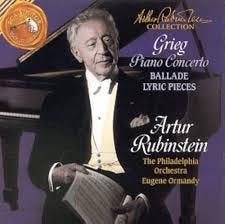


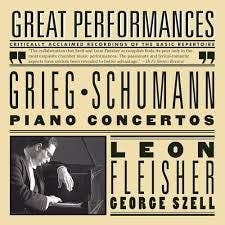

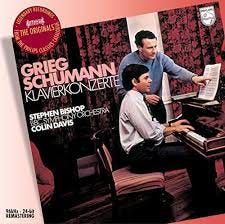

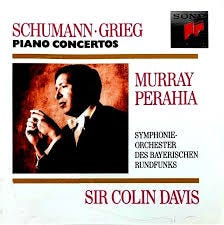
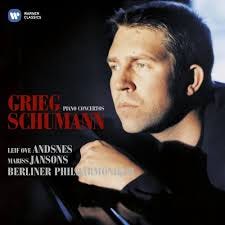
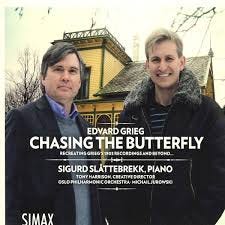
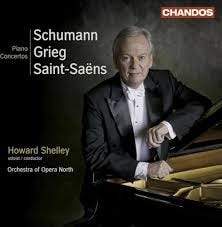

Thanks for the post. Entremont / Ormandy has long been my favorite followed by Fleisher / Szell as a close second.
Thank you John for the survey. The Grieg’s concerto is one of my all time favorite, expecially for the tender, poetic slow mouvement. In my opinion there are two big absence: Arturo Benedetti Michelangeli with The New Philharmonia Orchestra directed by Rafael Frhubeck de Burgos on a 1965 live on the BBC label. Another one is very difficult to find but an absolute gem in my view. The label is Norsk Kulturråds Klassikerserie. The pianist is Jens Harald Bratlie with the Oslo Philharmonic Orchestra directed in 1988 by the great Mariss Jansons.
I recommend everyone to listen to these two fantastic versions.